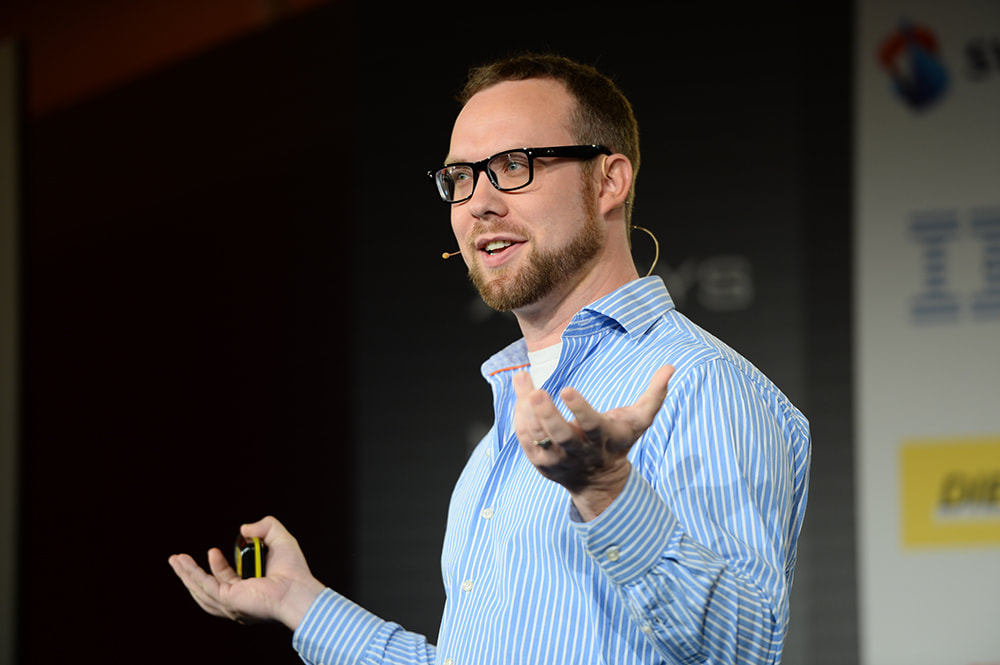Speaking engagementsI have given talks and keynotes in dozens of countries on a variety of topics. Some recordings are available below. These are topics I am passionate about , so I joyfully welcome all feedback!
Need an expert speaker to discuss cybersecurity topics for your event? I have given multiple keynotes on security topics for small and large audiences, expert and general public. My talks below show my style. Please contact me by e-mail if you are interested in having me on as a speaker |
|
YOU SHOULD LEARN HOW TO HACKI was invited to give another TEDx talk to showcase how things get hacked, and to talk about who hacks and why. My take is that everyone should actually know how to hack, because you can't play effective defense unless you understand the offense.
Why I Teach People How To HackHere I discuss my philosophy for why I focus on teaching hacking instead of traditional security. In short, I think that defense is best served if you adopt the hacker mind-set, the understanding about what can wrong and how it can be exploited. I adapt this approach in university courses, hacking competitions, and a security company I founded called Syndis. The approach is effective and engaging for students, but also raises important ethical questions. I am flattered that the talk his had over 1,700,000 views.
NZZ X.Days Conference 2017I gave a keynote on why organizations should adopt the hacker mindset at the NZZ X.Days 2017 conference in Switzerland. The full talk is available on the conference website.
Anatomy of a Phishing AttackI was contacted by the Vocativ news network in 2013 and asked if I could do a live hack against a reporter. With the help of my colleagues at Syndis, here you can see results of a very simple but common attack in a somewhat dramatic portrayal...
Rowhammer attacks explainedI gave a general audience talk at the UTmessan IT-conference in Iceland about the up and coming Rowhammer attacks, where a single bit flip with JavaScript can compromise the security of your machine. The original talk is in Icelandic, see English version below.
How Alan Turing Cracked The EnigmaThis general-audience lecture explais the details of the elusive and fearsome Enigma cryptographic machine that Germans used to encrypt message in WW2, and how the Allies systematically exploited the system. The talk gives an insight into some of the major contributions by Marian Rejewski and Alan Turing, and attempts to explain the ingenuity of their insights.
How Do I Learn How To Hack? (In Icelandic)I gave a 90 minute brief introduction to the basics of hacking and how hackers operate at Reykjavik University a while back. The talk is in Icelandic. If you want to learn more, most of the material can be found in expanded form in the hacking courses I have been teaching.
|
estimating malaria prevalenceIf you are unlucky enough to have malaria, you might even have multiple strains of malaria concurrently from different mosquito bites. These multiple infections confound our malaria surveillance and make it harder to monitor how well different intervention strategies are working. On behalf of a team at Emory and the CDC, I gave a talk at the 2017 ASTMH conference about new genotyping and mathematical methods we devised to estimate the multiplicity of infection of the P. falciporum parasite, opening a new window for understanding malaria in high-prevalence populations.
Elastic Storage Via File MotifsI gave this research talk at the USENIX HotStorage 2014 workshop, presenting an elastic storage system we have been working on. In short, cloud systems make it easy to elastically dial up CPU and memory resources for virtual machines, but it's hard to scale back storage since we're committed to not losing data. Harmonium allows you dynamically scale back storage resources by exposing a "motif" abstraction: a recipe for how files were created and how they could be recreated. Harmonium transparently removes old files, allowing them to be seamlessly recreated later when they are needed. You can read more in the accompanying paper.
Why It's a Small WorldOn Facebook, you know pretty much any person on the planet through a friend of a friend of a friend of a friend. In more traditional settings, the distance is about 6. Why is this case? In this Pearls of Computation talk given at Reykjavik University in 2014, I discuss some of underlying reasons and the models that scientists have come up with the explain our "small-world". (Most of the slides were borrowed from my colleage Jure Leskovec at Stanford University).
Ultra Scalable Messaging SystemsMy PhD work included two systems that deal with scalability of data replication and messaging: Dr. Multicast and Kevlar. The former addresses scalability challenges of IP Multicast within data centers, arguing that the technology can be safely used. Kevlar is about enabling efficient messaging in wide-area networks, seamlessly bridging together different messaging systems. The talk is from 2011 so some of the context is a bit dated.
|
